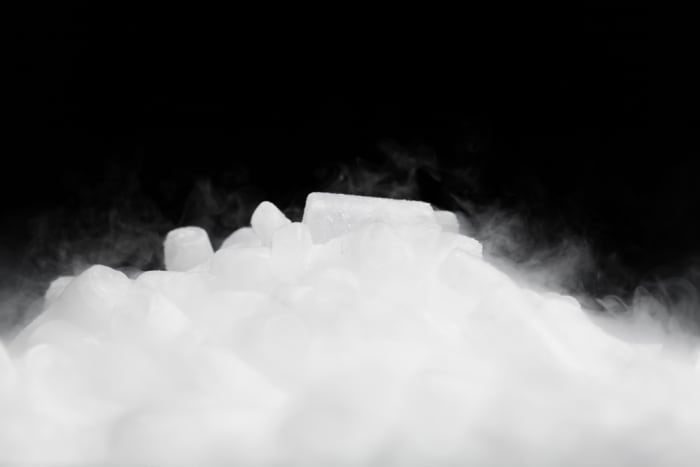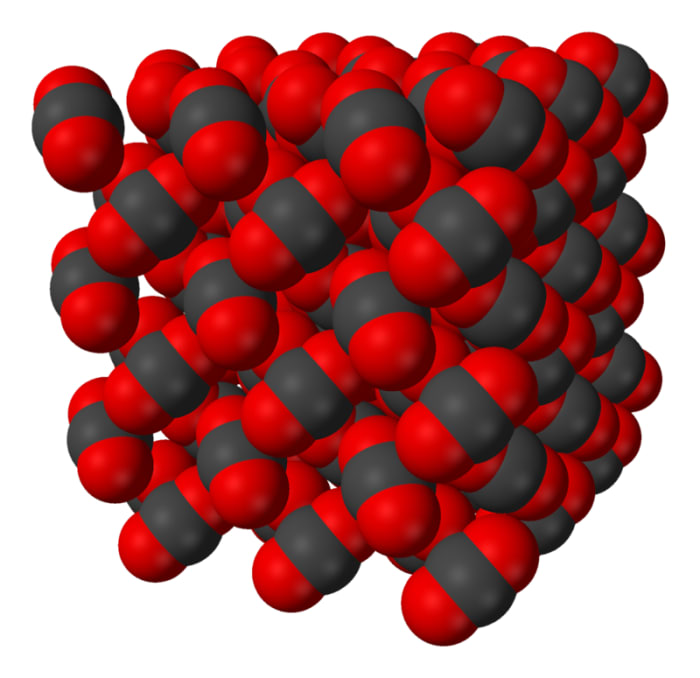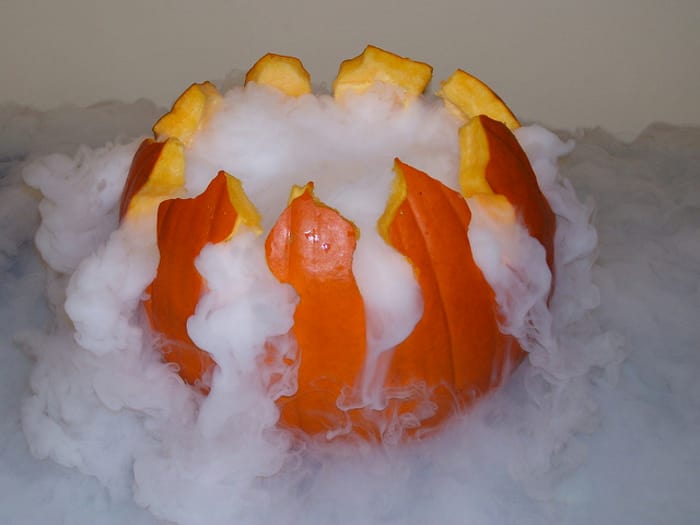How to make dry ice
This ice never melts!
Along with ordinary ice, the solid phase of water which most people keep in their homes, there is also dry ice, which can be found in specialized stores. Everyone knows the function of ordinary ice: cooling drinks and food, use in cosmetics and medicine etc., while dry ice seems strange and mysterious.

This article will help you to find out what dry ice is and how it is used, and you’ll also learn about a method of preparing it at home.
Let’s take a look at dry ice
Dry ice is solid carbon dioxide, with the formula CO₂.

At room temperature, this substance has an interesting property: it doesn’t melt, it evaporates. This means that dry ice completely avoids the liquid state, which creates an interesting effect. Solid carbon dioxide got its name because of its resemblance to ordinary ice. The temperature of dry ice in its transition from an ordinary state to a gaseous state is -78.5 degrees Celsius. So you should be very careful in working with this substance, and wear special gloves and protective clothing. Dry ice is made at special factories, but if necessary it can also be made easily at home.
The application of dried ice
Dry ice is a natural, environmentally sound and safe substance, which has all the functions of ordinary ice, but as dry ice does not have a liquid state, it is more convenient for use, for example in transporting food or medicine. This substance is also used for storing ice cream in supermarkets and for cooling beer. But some homemakers have also found another application of dry ice, using it to make fizzy water. Take a small piece of dry ice and put it in a can or bottle of water. Then firmly close the container with a lid and shake it – the gas will be released. Dry ice can also be used for making kvass. Remember safety rules and try not to overdo it: the container will explode if there is a large amount of dry ice in the bottle. You can also freeze food with it, for example meat or fish. Carbon dioxide is also used often for household purposes: you can use it to get rid of old ceramic tiles. The sublimation process of dry ice has an impressive effect, so it is often used in photographs, and also at concerts, discos and other events, serving a decorative function.

Make dry ice yourself
You can make dry ice for practical purposes, and there are also various interesting chemical experiments that involve this substance. You can prepare carbon dioxide at home, but we still recommend that you prepare dry ice outdoors, and not in a closed room.
Here is a list of what you will need for the experiment:
-
a fire-extinguisher with carbon dioxide (if you’re going to buy a fire-extinguisher, make sure you get the right one, because not all fire-extinguishers use carbon dioxide. Foam and powder fire-extinguishers won’t be suitable);
-
cloth gloves. Don’t use rubber gloves. A good option is to wear warm knitted wool gloves or mittens;
-
an old, unwanted pillow case;
-
protective goggles;
-
lab coat.
To carry out the experiment, you must observe one condition — be responsible with the equipment, especially where your hands are concerned: you can’t work without protection, because dry ice can cause burns. If you don’t feel confident doing the experiment on your own, then call an experienced person to help you. Bright and safe experiments with other gazes you’ll find here.
To start with, take the fire-extinguisher and put the nozzle into the pillow case, sock or thick towel, depending on what you use. Make sure that the nozzle is completely sealed by the cloth, so that the gas can’t escape.
Then press hard on the release trigger. When the carbon dioxide gas flows out very quickly, it doesn’t manage to turn into gas, and resembles snow. This is what dry ice looks like. When you add pieces of dry ice to water, a snow-white fog appears, from the evaporation of the ice.
With dry ice you can show children interesting tricks, for example you can add a cleaning agent to water containing dry ice. A lot of foam will appear on the surface, and if you burst it, fog will come out of the bubbles.